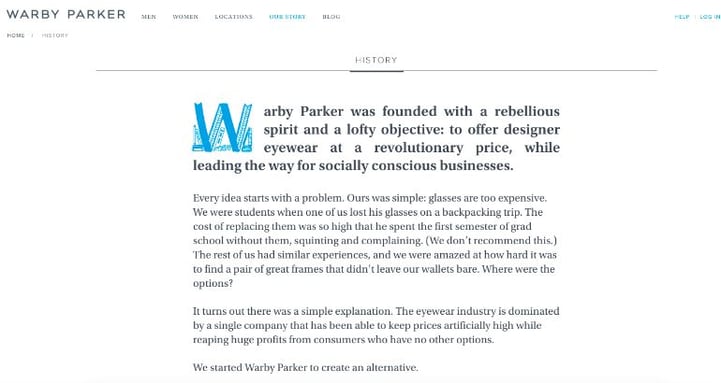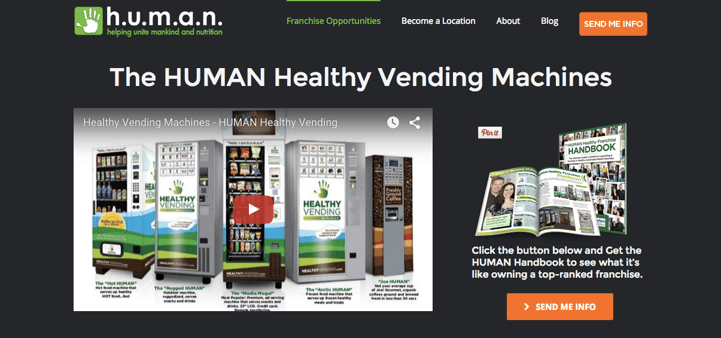
Creating a marketing strategy is always a challenge — for any brand. But in the food industry, I think businesses encounter really unique challenges to market their products.
As the VP of Marketing and Sales at Centra Foods, I’ve kept a close eye on B2B and B2C companies implementing their own marketing strategies. I also do a lot of research on marketing in the food space, and I think that marketing for food brands in the natural and organic industry requires some unique advice.
I’m going to go over 7 basics that I’d recommend for any natural food brands working in the B2C space. That is, business to consumer — selling directly to retail grocery stores and/or end consumers.
This isn’t a set-in-stone rulebook, but more of a recommendation based on advice from marketing pros, taking into account what other food brands in the natural/organic space are doing.
Let’s dive in.
1. Speak Authentically
One of the first best things you can do is approach your marketing strategy as YOU (and by you, I mean who you are as a person, a founder or a brand persona). Being a “real person” — who speaks and relates in an authentic way — can go a long way when you speak for your brand.
When you write your content, talk as if you’re in a polite but honest conversation with a friend. It will help you be as clear and concise as possible to get your message across. It will also make you sound real (as opposed to Marketron, the marketing robot).
Remember: clear, concise and real.
2. Stand Behind Your Causes
If your brand stands for something, stand behind it strongly!
For example, if you started an organic brand to provide better food and benefit the environment, you can stand behind the organic movement as a whole.
If you started a nut-free product line, you can stand behind how your product changes the lives of those allergic to nuts. You allow a girl who is nut-free to have the convenience and safety of an after-school snack.
To find your cause, start by by looking at the root of why your founder started the company in the first place. What was it that made someone stand up one day and say, “I want to do/create something new”?
Warby Parker (an eyeglasses company in NYC) does a great job of this. Their founder, a grad student at the time, was on a backpacking trip when he lost his glasses. Glasses were so expensive that while he wanted to replace them, he couldn’t actually afford to buy a new pair for a full semester (damn that college budget!). He spent those months without glasses squinting and complaining.

This story is a great example of the “power of why” — explaining the reasoning behind why you do what you do — not what you do or how, which are both easier questions to answer.
Understanding your story of why will help you stand behind your cause.
3. Tell Your Story
On a similar front, being able to communicate that story is equally important. Understanding it for yourself is one thing, but being able to convey it in a captivating way is quite another.
Some of the best story tellers suggest Pixar’s standard outline for a story.
Pixar story artist, Emma Coats has cracked the code and argues that every Pixar film shares the same narrative DNA – a deep structure of storytelling that involves six sequential sentences:
- Once upon a time there was _________________
- Every day _________________
- One day _________________
- Because of that _________________
- Because of that _________________
- Until finally _________________
Take for example the plot of Finding Nemo.
- Once upon a time there was … a widowed fish, named Marlin, who was extremely protective of his only son, Nemo.
- Every day … Marlin warned Nemo of the ocean’s dangers and implored him not to swim far away.
- One day … in an act of defiance, Nemo ignores his father’s warnings and swims into the open water.
- Because of that … he is captured by a diver and ends up in the fish tank of a dentist in Sydney.
- Because of that … Marlin sets off on a journey to recover Nemo, enlisting the help of other sea creatures along the way.
- Until finally … Marlin and Nemo find each other, reunite and learn that love depends on trust.
This six-sentence template is both appealing and supple. It allows pitchers to take advantage of the well-documented persuasive force of stories within a framework that forces conciseness and discipline.” Source
In sales arenas, this is actually known as the “pixar pitch”, which is another reason to create your story — once it is written, your sales staff can use this as a great introduction for your company in sales meetings.
You can actually write out those prompts and fill in the information in the blanks with your story. That will help you explain your story in the most engaging “story-like” way possible.
4. Clearly Explain What You Do
Make sure customers understand exactly what you do. There should be no question about what you do when your customers visit both your home page and your about us page on your website.
If you had to explain what you do in 10 words, what would you say? Look at it from another perspective — if you had to explain how your customers benefit from working with you in 10 words, now what would you say?
Let’s up the ante… can you explain what you do in 5 words? What do your customers gain from working with you in 5 words?
How about 1 word? Okay, I know that’s pushing it a bit. But it’s actually a good exercise to do, because it helps you clarify what your company really stands for.
Take a look at this example from HUMAN Healthy Vending Machines. They specialize in selling foods that aren’t high in sugar or fat, replacing the typical vending machine foods. When you visit their website, here’s what you’ll see:

The first thing you’ll read is “The HUMAN Healthy Vending Machines”. Is there any question about what they do? Not at all — they’re trying to be as clear and concise as possible so that the second their potential customers reach their site, they’ll know if they’ve come to the right place or not.
5. Know Your Differentiating Factors
Understanding what makes your company different than your competitors is vital for you to have success and market your company.
The things that make you different, that would make a customer choose you over another company are called your “differentiating factors” — literally, what makes you different than others.
If you aren’t clear about what makes you special, start asking! In fact, you can start by asking your own customers! They know why they chose you over another company, so they’ll be able to tell you what’s so special about you.
Once you confirm the information from them you can move forward knowing for sure why others think you are special — not just what you might guess. That will give you guidance and structure as you’re selling your brand to consumers in many different arenas.
6. Get Your Customers Involved
In today’s day and age, it’s important for you to get your customers involved as much as you can using social media. It doesn’t matter which social media outlet you choose, as long it’s where your customers (and target market) is handing out.
A few brands have done this especially well.
Warby Parker: First off, good job Warby Parker! You’ve earned two shout outs today. In this case, Warby Parker includes a handout in their sample boxes, instructing you to take a photo of you in their glasses and share it online using the hashtag #warbyparkerhometryon to get feedback. This allows others to get involved and tell you what looks good.
Runa Instagram Hashtag: Runa’s #fullyalive hashtag asks customers to photograph themselves showing what it means to them to be ‘fully alive’.
This gets their brand involved with the adventure movement and calls to a particular type of person (their buyer persona!). Mentally, it also ties their company as the supporters of this movement, which helps their customers connect to them as real and like them even more.

7. Have A Website
This may seem like a simple final point, but making sure that you have a website is absolutely essential to be able to show your brand off.
The cost of a website can range from a few thousand to upwards of $50,000, but they are almost always worth their weight in gold.
Just the simple fact that you have a website is a basic minimum for any company (large or small) to legitimize themselves and differentiate from their competitors. Yes, this website is a marketing platform, but it can also help you close sales when presenting to distributors as well. Just knowing that you’re a real company and learning your story on their own time will help you spread your message and grow your company.
Websites also provide a great avenue to connect with your customers, promote social media campaigns (key for B2C businesses) and share testimonials about what others think of your product.
Show yourself off, hot stuff!
Topics: Business & Leadership












